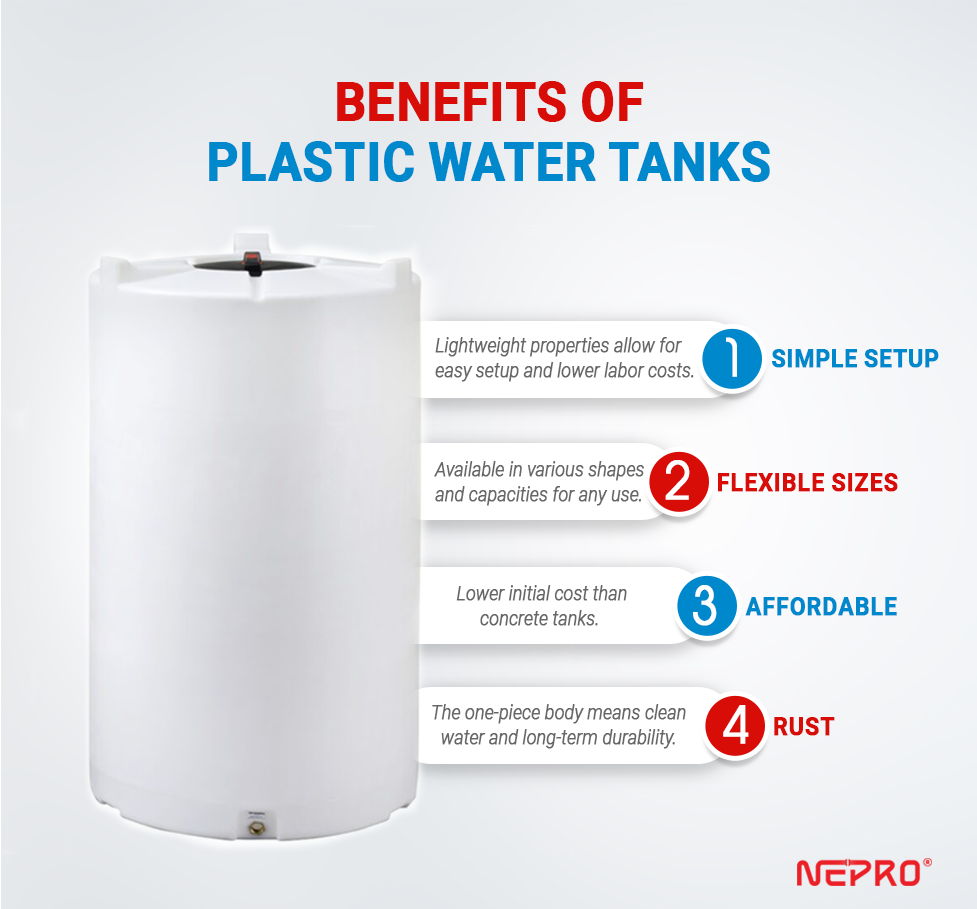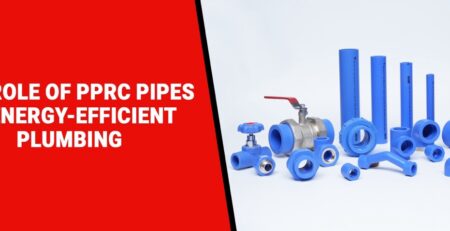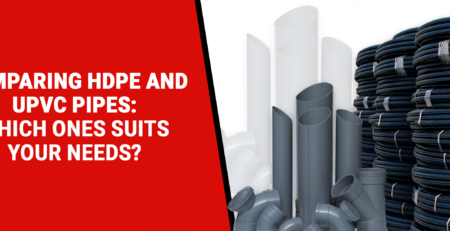Deciding on Concrete vs Plastic Water Tanks for Your Home
A decision between concrete vs plastic water tanks is vital for reliable water storage. Plastic water tanks are flexible, easy to install, and cheaper. Concrete water tanks bring great long-lasting durability and a more stable temperature for your water storage. This guide highlights the pros and cons of each type for you to decide the best kind of water tank solution for your home.
Choosing Between Concrete vs Plastic Water Tanks
Reliable water storage or usage is an essential resource for any property, whether you need it for daily domestic water needs, an emergency supply, or to irrigate your farm. The type of material of the water tank that you choose can affect tank performance, expected longevity, and price significantly. Despite the many options available, the main decision for many people comes down to concrete vs plastic water tanks. Each material has its positives and its shortcomings. Being aware of these differences across the variation of products is crucial to making an informed decision that satisfies your needs while also fitting your budget. The goal of this article is to help you get there with a thorough comparison.
Understanding Modern Plastic Water Tanks
Now there is an alternative solution to your water storage issues, problems, and challenges. Plastic water tanks have changed the way people store water in homes and businesses. Their versatility and usefulness mean they are often chosen. Typically made from virgin, food-grade polyethylene, they allow safe and clean storage of drinking water. They can be manufactured in a myriad of shapes and plastic water tank sizes, with their flexibility in design, so they can fit any property line and space restriction.
Benefits of Plastic Water Tanks
Water tanks made of plastic possess many benefits that make them a strong alternative against concrete tanks, allowing for easier logistics, lowering strain on labor, and allowing for very efficient and flexible logistical flow.
They are lightweight, portable, and easily installed. They are also durable, are not subject to rust, long-lasting, and have very low maintenance. Especially when it comes to cleaning a water storage tank.

Key benefits include:
- Easy Install: Plastic water tanks are many times lighter than concrete, which reduces transport and positioning costs and time. Resulting in less time to install and saving labor costs.
- No Rust: You will not rust a plastic tank like metal, therefore you conserve water purity and prolong your tank’s lifespan.
- No Welds: There are no broken welds with a tank made of resin, as it is built as a single unit, with no leaks or breaks, and better water quality without wasting time.
- Value: Typically, the initial price of a plastic water tank is less than an equivalent concrete tank.
- Different Shapes & Sizes: Available in all shapes and plastic water tank sizes, from small units that would be the ideal plastic water tank for home use to massive industrial capacities.
The Solid Characteristics of Concrete Water Tanks
Concrete water tanks are a common and extremely sturdy option for water storage. The tanks are commonly poured on-site, and are recognized for their strength and reliability in terms of longevity as a component of so many long-term infrastructure endeavors and major residential applications.
Benefits of Concrete Water Tanks
Concrete water tanks have some unique advantages, especially when a customer needs lasting performance, structural integrity, and particular conditions are called for. Concrete offers a level of durability and dependability that competitors may be unable to offer.
Keep these important benefits in mind:
- Unmatched Durability: We all know concrete has great strength and reliability. A properly made concrete water tank is capable of standing up to substantial external pressures and uniform environmental conditions, often lasting many decades, and sometimes over a hundred years!
- Consistent water temperature: While concrete can certainly insulate to some extent, it does help keep a consistent temperature in the tank that holds the water and also keeps the water cool in warm climates or keeps it from freezing in cooler climates.
- Great for use once buried: Many concrete water tanks can be used in underground water tank installations. This placement saves valuable above-ground space, and it complements thermal stability even more. All they normally need is a reliable concrete cover for the water tank for protection and access.
In-Depth Comparison of a Plastic Water Tank vs a Cement Water Tan
We will take a side-by-side approach to the comparison of plastic water tank vs cement water tank (cement water tank is another often-used name for concrete water tanks) and the various aspects of operation and functionality. Doing a direct comparison of the two will make clear the significant differences that exist between their performance and usage.
Main Comparative Points
Recognizing these differences is important when you make your final decision:
Installation Hazards:
- Plastic: Plastic is simple and fast to install, and most systems require a prepared, flat base.
- Concrete: Concrete usually incurs additional on-site labor costs to build the concrete water tank due to large excavation, labor, and curing time.
Maintenance Obligations:
- Plastic: Usually needs less structural maintenance throughout its entire lifespan and periodic cleaning.
- Concrete: Needs proper sealing during construction, may require re-sealing with minor leaks, and/or an initial change in water pH (minimally).
Water Quality Effects:
- Plastic: Food-grade plastic water storage tanks are inert and typically do not affect the taste of the water or its pH.
- Concrete: Can sometimes have a slight temporary pH change in water, depending on whether the concrete was sealed and cured correctly.
Anticipated lifespan:
- Plastic: 20-30+ years of service from quality plastic water tanks from reputable plastic water tank manufacturers.
- Concrete: If constructed properly and with good care, concrete water storage tanks may last longer than 50-100 years.
Structural Strength for Buried Applications:
- Plastic: Strong underground plastic water tanks are available, but you must use specific installation practices to support any soil loads.
- Concrete: Commonly selected for very large-scale buried projects for its tremendous inherent structural strength to resist soil loads.
Making the Right Decision: What to Think About
In the end, your choice between concrete vs plastic water tanks should always depend on careful consideration of a number of important factors. Careful consideration will help you identify the most suitable water storage option for your needs.
Think about these things before you make a decision:
- Budget: Explore the purchase/construction cost and ongoing (maintenance) expenses.
- Capacity: Get an accurate estimate of the capacity of the concrete water tank or the appropriate size plastic water tank based on the water you anticipate you will use.
- Location: Determine where the tank will go (above or below ground), the available footprint for placement, and the local climate.
- Climate Considerations: For example, if cold nights and hot days are common, there could be a potential benefit of the insulation of concrete water tanks to help stabilize temperature.
- Water Usage: Make sure the material you choose for the tank is suitable for your specific water (i.e., if for drinking water, it needs to be food grade).
- Installation Expertise: Decide if you are a competent DIY person for a plastic tank installation or whether to employ contractors for a concrete structure.
Summary
The decision between concrete or plastic water tanks for a quality, durable water storage option is very important. Nepro, as a polymer and plastic water tank manufacturer and supplier, does have capacities concerned, such as 1000 liters and 2000 liters. It is very popular, which is inexpensive, easy to install, and corrosion-resistant–and can be utilized for any application, including any plastic water tank for home.
Concrete water tanks are incredibly hard-wearing, have superior thermal capacity, and are ideal for multiple uses and permanent underground water storage. Check your space and needs before deciding on a budget. The various factors to consider, including plastic water tank vs cement water tank, your choice of installation requirements, maintenance requirements, frequency of use, and longevity, will narrow down your basic options. Make the right tank choice and you will have safe, effective, and reliable water storage for many years.
Concrete vs Plastic Water Tanks FAQs
What are the usual permitting requirements for large water tanks, both plastic and concrete?
The nature of permitting will often depend on local regulations or tank size. Larger tanks are most likely to require a building permit, site plans, and to comply with local zoning and structural codes to ensure safe installation.
What general impact do extreme temperatures (hot and cold) over time have on the material integrity of plastic tanks versus concrete?
Extended periods of extreme heat can lead to plastic becoming brittle over time if not UV-stabilized. Extended periods of extreme cold can lead to some plastics being more susceptible to impact damage. Concrete tanks afford good thermal stability, although severe and repeated freeze-thaw cycles can still create problems.
How do I best prepare the base or foundation for both tank types?
Plastic tanks require a level, smooth, and compacted base. Concrete tanks require an engineered reinforced foundation capable of supporting heavy loads and extending below the frost line in a cold environment.
Are there special materials that are used for interiors in concrete tanks to reduce contamination of water or changes in PH?
Yes, food-grade epoxies, cementitious, and polyurea coatings can be applied to the interior of concrete tanks. It will create an impermeable barrier so nothing leaches into the water and the water quality remains intact.
What is the environmental footprint difference of producing and recycling plastic tanks versus concrete tanks?
Plastic manufacturing uses fossil fuels, however, HDPE is extremely recyclable, which results in lower emissions during transport. Concrete manufacturing is extremely CO2-intensive, however, demolished concrete can be reused in the future as aggregate, and the life span of tanks is extremely long.












Leave a Reply